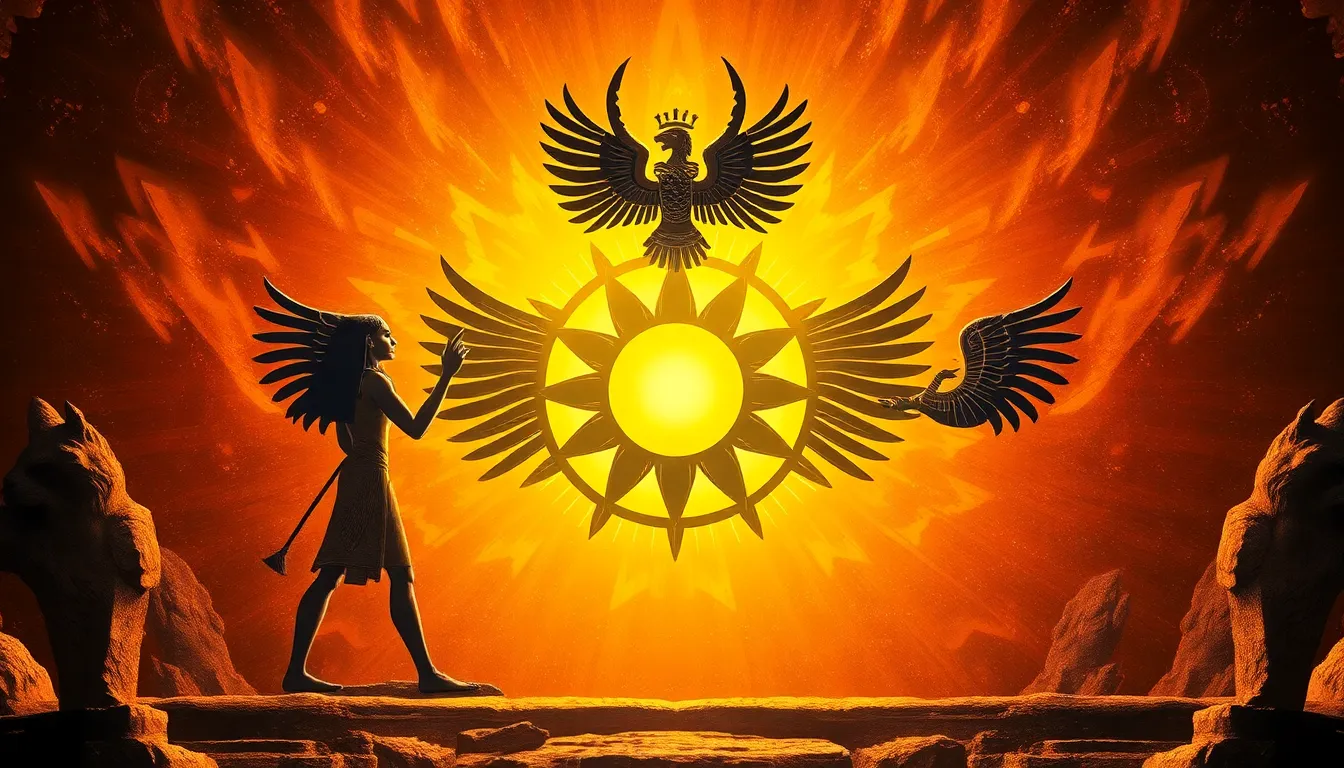The Myths of Ra: The Sun God’s Eternal Cycle
I. Introduction to Ra: The Sun God of Ancient Egypt
In the rich tapestry of ancient Egyptian mythology, few deities hold as much significance as Ra, the Sun God. Ra was not only a symbol of the sun but also represented creation, life, and the eternal cycle of existence. His powerful presence was felt throughout the land, influencing agriculture, the changing seasons, and the very essence of life itself. The concept of the eternal cycle, embodied by Ra, refers to the continuous cycle of birth, death, and rebirth that permeates both nature and existence.
II. The Birth of Ra: Genesis of the Sun God
According to ancient Egyptian myths, Ra’s origins are steeped in the primordial waters known as Nun. In these chaotic waters existed the first forms of existence, and from Nun emerged Ra, often depicted as a falcon-headed man adorned with a sun disk.
- Creation Myths: Various creation myths highlight Ra’s emergence as a central figure. Some narratives describe him as self-created, while others depict him being born from the cosmic waters.
- The Role of Nun: Nun represents the void and chaos before creation. Ra’s ascension from Nun signifies the triumph of order and light over chaos.
III. Ra’s Daily Journey: The Solar Cycle Explained
Ra’s journey across the sky is a profound metaphor for the cycle of life and death. Every day, he is believed to travel from the horizon at dawn, across the sky, and back into the underworld at night.
- Symbolism of Ra’s Passage: Ra’s journey symbolizes the cycle of life, illuminating the world during the day, representing growth and vitality.
- The Underworld Journey: At night, Ra descends into the underworld, where he battles darkness and chaos, ensuring his rebirth at dawn.
IV. Ra’s Manifestations: Different Forms and Aspects
Ra is not a singular entity but manifests in various forms throughout his daily cycle. Each aspect represents different times of the day and symbolic meanings.
- Ra as Khepri: Representing the morning sun, Khepri is often depicted as a scarab beetle rolling the sun across the sky, symbolizing rebirth and regeneration.
- Ra as Horakhty: During midday, Ra is known as Horakhty, embodying strength and power, depicted as a falcon soaring high in the sky.
- Ra as Atum: In the evening, he takes on the form of Atum, signifying the setting sun and the transition into the night, representing completion and rest.
V. Myths and Legends: Ra’s Encounters with Other Deities
Ra’s interactions with other deities are rich with symbolism and reflect the struggles between order and chaos, light and darkness.
- Ra and the Goddess Sekhmet: In one myth, Ra created Sekhmet, a fierce lioness goddess, to punish humanity for their disobedience. However, her wrath became so uncontrollable that Ra had to contain her.
- Ra’s Battles with Apep: Apep, the serpent of chaos, represents the darkness that threatens Ra’s journey. Each night, Ra battles Apep in the underworld, symbolizing the eternal struggle between good and evil.
The significance of these encounters lies in their representation of the eternal cycle of conflict and resolution, embodying the dualities of existence.
VI. The Cult of Ra: Worship and Rituals
The worship of Ra was integral to ancient Egyptian culture, influencing religious practices and societal norms.
- Temples Dedicated to Ra: Numerous temples, such as the Temple of Karnak, were built in honor of Ra. These sacred spaces served as centers for worship and rituals.
- Festivals Celebrating Ra: The ancient Egyptians celebrated festivals such as the Wepet-Renpet, marking the beginning of the new year and the renewal of life, closely tied to the solar calendar.
VII. The Legacy of Ra: Influence on Later Cultures
The influence of Ra extends beyond ancient Egypt, impacting various cultures and mythologies throughout history.
- Greco-Roman Mythology: The Romans adopted the worship of Ra, equating him with their sun god, Sol, and incorporating elements of Egyptian mythology into their own.
- Continued Reverence for Solar Deities: Many cultures have continued to revere solar deities, reflecting the universal importance of the sun as a source of life and energy.
VIII. Conclusion: Ra’s Eternal Cycle in Modern Context
The myths of Ra resonate with contemporary spirituality, illustrating the timeless nature of life’s cycles. In modern contexts, the sun remains a powerful symbol of hope, renewal, and energy.
As humanity continues to navigate the challenges of existence, the enduring legacy of Ra serves as a reminder of the eternal cycle of life, death, and rebirth, reflecting the deep connection between humans and the natural world.




